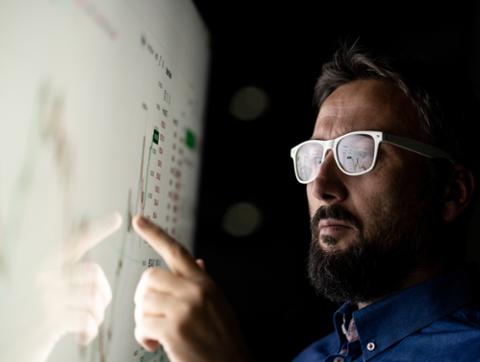The role of the Chief Developer Experience Officer (CDXO) has emerged as a pivotal one in shaping the future of technology companies, while offering a new career path in tech. This position, focused on enhancing the developer experience (DX), is not just about creating an environment where code flows seamlessly; it's about nurturing a culture where innovation, efficiency, and satisfaction converge to propel a company forward. The introduction of the position represents the tech industry’s strengthened focus on digital products and services. It also provides an elevated career trajectory for developers who could previously tap out at the VP level, expanding the opportunities to those with software engineering backgrounds.
What Is a CDXO?
The role of the CDXO is to champion DX across the organization, bringing the developer discussion to the C-suite, advocating for resource allocation toward developer needs, and ensuring that developer tools and environments are functional and seamless to use.
DX can be understood as the user experience (UX) tailored to unique needs and principles of developers. The developer's journey, marked by an incessant cycle of learning and adaptation to new and complex tech stacks, demands that a DX simplifies, engages and inspires. At its core, DX is the interaction between the developer and the product. It can be either a source of empowerment or a source of frustration, affecting not only the end user, who might be a client or an internal engineering team, but also the overall performance of other teams.
To achieve a great DX, the CDXO role must fulfill a broad spectrum of activities, including empathizing with developers' perspectives, streamlining feedback mechanisms to ensure clients’ needs are prioritized, and ensuring the product's evolution through automation and simplification.
From facilitating smooth onboarding with tutorials and starter kits to fostering a vibrant community that contributes to open source solutions, the CDXO ensures that every interaction with the product enriches a developer's experience. Moreover, providing developers with comprehensive tools and developer interfaces such as APIs, CLIs, SDKs, and extensions enhances their ability to create and innovate efficiently.
Responsibilities of a CDXO
The endgame for a CDXO is to make the company adopt DX as a mindset rather than view it as an isolated business function. This requires a companywide commitment since it is a strategic theme that can have a transformative effect, shifting the focus from merely building robust platforms to creating outstanding developer experiences. This holistic approach ensures that the company not only meets current technological standards but also anticipates and shapes future trends.
In the context of lean agile business practices and the pressures of AI and rapid innovation, the CDXO's role becomes even more critical. The ability to prototype quickly is a major keystone in nurturing innovation and delivering value efficiently, providing a competitive advantage in today's fast-paced tech landscape. Every day that a company fails to provide exceptional DX in their product or service is a missed opportunity to engage with new developers and clients, potentially influencing wider adoption.
Required Skills for Becoming an Effective CDXO
There is a specific combination of skills and experience required from candidates aspiring to the role of CDXO. Of course, it all starts with engineering experience, which will give them valuable insights into the software engineering mindset and a better understanding of the developers’ needs and pain points.
A CDXO is an advocate for the developers and, as such, needs to translate their needs and opinions by putting them into a context that can be easily comprehended by others. This means that good communication skills are a must, combined with empathy and the ability to place themselves in the developer's shoes. Business acumen will help establish a strategic thinking approach that aligns DX initiatives with company goals.
Leadership skills are also crucial. Many parts of an organization can have an impact on DX, positive or negative, and the CDXO may need to rally and orchestrate them to work toward a common goal. And since a CDXO is an emerging role with no set rules yet, the creativity and flexibility to experiment, accept feedback, quickly adapt, and iterate is essential.
How to Contribute to the Role and the Organization
Many organizations don't have a CDXO position due to a lack of awareness of its importance and benefits, as it is a relatively new role. However, there are more than enough reasons to adopt it.
Companies with awesome DX that have developers as their clients hold a competitive edge to grow exponentially. But DX is not just for clients; internal development teams can be more productive and onboard faster, fostering growth and continuous innovation internally.
Developers are problem-solvers and innovators. Instead of making them fight with tools and processes, we need to help them focus on their work. Even though they don't control the budget or make decisions, they have the final say when selecting a platform and can influence decisions when selecting a product. They simply won't tolerate bad DX and will look for alternatives.
A recent study, conducted in partnership between Microsoft and a company called DX and published by GitHub, makes it clear that good DX has a positive, and measurable, impact on developers' productivity, increasing developer velocity. We are not talking about small improvements, either: the study demonstrates up to a 50% increase in flow state and cognitive ease, which increases productivity and innovation, respectively, and 20% better feedback loops, which increases innovation. On the other hand, bad internal DX will make developers want to leave the company.
Good DX also helps to foster a strong developer community, opening direct feedback channels and developing community members who can become advocates of your products and services. Lastly, by making sure that developers' needs are understood, it will be easier to retain internal talent and attract new talent that will help your company grow.
The Chief Developer Experience Officer is a game-changing role for organizations and their customers. It's a visionary position that champions the developers’ cause, driving innovation and growth from the inside out. Aspiring CDXOs can look forward to leveraging their experience to strengthen product offerings and cultivate an environment where developers feel valued, empowered, and engaged. The CDXO role is in a position to become much more prevalent across the tech ecosystem, giving developers a significantly elevated career trajectory and the chance to bring DX to the forefront of organizations. If you have experience in these areas and are aspiring to your next position, finding or establishing a CDXO role may be your next career move.
About the Author
Alessandro Cauduro is CDXO of Azion. Since the inception of the internet in 1993, he has been passionately involved in building digital projects. Notably, he co-founded Haus, a highly successful digital marketing holding of companies that later was acquired. In his role as CDXO, he is dedicated to empowering developers to create and optimize their applications directly on the edge. He’s revolutionizing the way applications are deployed and enhancing overall user experiences.



